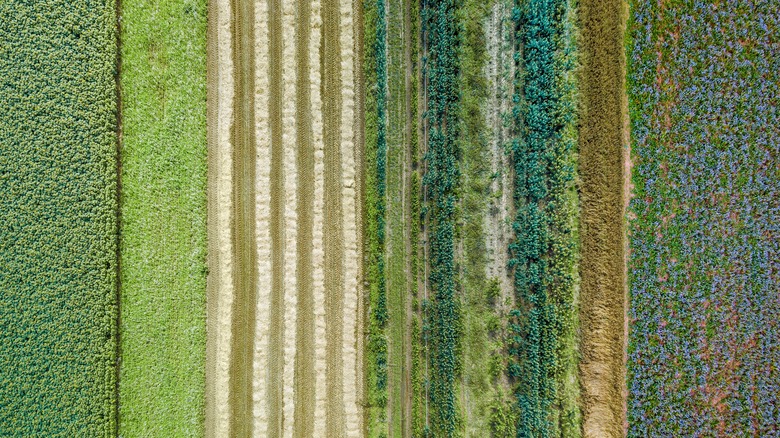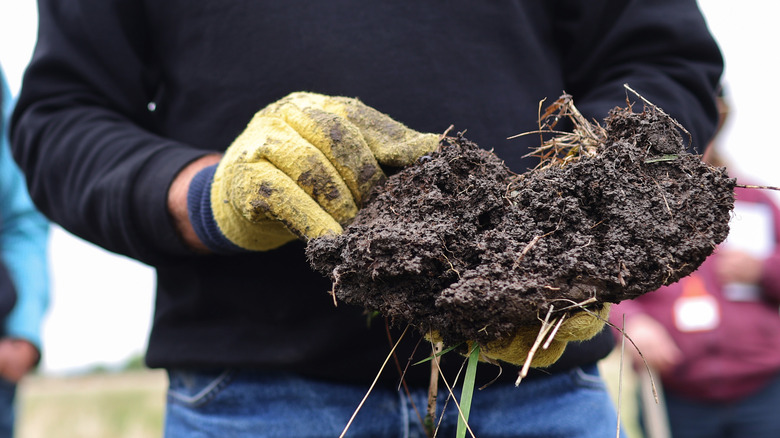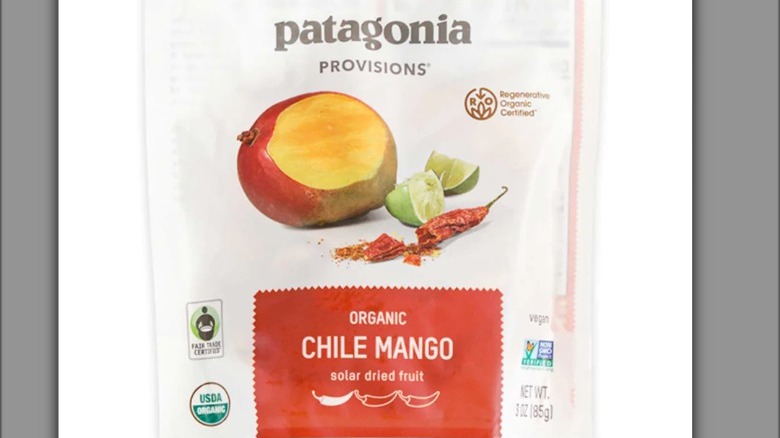What Exactly Is Regenerative Agriculture, Anyway?
It doesn't take a science background to notice that organic food is becoming increasingly popular. While the organic sector still represents a minority of the overall market share, it's growing steadily: Only 3% of the U.S. market in 2008, its share was up to 6% in 2020. The pandemic saw a considerable surge in organic buying, per The Food Institute, and this shows no signs of letting up. According to Statista, 46% of American consumers purchased organic dairy products in 2022, for example.
Given the popularity of organic products among consumers, it's no surprise that more food producers are joining the ranks of organic farmers. Organic is going mainstream, and even discount supermarkets like Aldi boast a considerable selection of affordable organic products.
As the demand for organic food grows, some are concerned that the term "organic" may be getting watered down or misused, reports The New Yorker. Among shelves full of misleading labels, how do you distinguish the real deal from the disingenuous? And is there more we can do for the environment beyond "going organic?"
What regenerative agriculture means
Enter regenerative agriculture, a term that's been around since the '80s but became mainstream thanks to the Rodale Institute's report on the subject in 2014. Regenerative agriculture turns its gaze to how farms are making a net positive impact by engaging in practices that promote healthy soil and reduce carbon emissions. It's a generalized way of transforming our food systems. Per the Rodale Institute, it "improves the resources it uses, rather than destroying or depleting them," and it "encourages continual farm innovation for environmental, social, economic, and spiritual well-being." Oftentimes, per the Ellen MacArthur Foundation, regenerative agriculture is about cultivating biodiversity — diversifying the crops and species on a single farm so they help each other thrive.
The Wall Street Journal points out that regenerative agriculture has a lot in common with the organic movement, especially in terms of growing food in soil that's free of "synthetic fertilizers and chemical pesticides." However, since the "regenerative" term isn't as much of a marketing buzzword, it may be more meaningful for those interested in supporting organic, sustainable farming. After all, regenerative agriculture shares organic farming's original emphasis on improving the condition of the land.
Are there regenerative agriculture food labels?
There is concern, however, that the vagueness of the "regenerative agriculture" term opens it up to misuse similarly to the organic label, which has already been lying to you in many instances. Despite the controversy, the USDA's organic labelling has pretty straightforward requirements, while regenerative agriculture currently does not. Moreover, a 2022 International Food Information Council survey found that only 19% of respondents were familiar with regenerative agriculture. As a result, critics worry that it's a term waiting to be exploited.
In response to this potential pitfall, efforts have emerged to document the practices that constitute genuine regenerative farming. One example is the development of the Land to Market seal. The verification program assesses farms based on their resulting "soil health, biodiversity, and ecosystem function." However, as The Wall Street Journal points out, Land to Market doesn't require organic practices or forbid the use of pesticides, unlike the Regenerative Organic Certified label, which has "stringent requirements for soil health, animal welfare, and social fairness."
Where to find products made via regenerative agriculture
One food brand expanding the availability of foods made with regenerative practices is Patagonia Provisions, which is actually behind the Regenerative Organic Certified label. Patagonia founder Yvon Chouinard said the practice aligns with the company's environmental values: "With regenerative agriculture, you're able to grow more nutritious, better-tasting food; you're growing topsoil; and you're capturing carbon—so it's a way of farming that's a win-win-win-win situation." Some of the brand's ROC products include basmati rice, popcorn, and dried fruit.
Meanwhile, the Land to Market seal opens up the regenerative certification process to producers who practice committed regenerative agricultural practices but balk at the government oversight required for the organic label (via The Wall Street Journal). One example is SunFed Ranch. Though only a fraction of its products are certified organic, the brand has adopted a number of strategies that place it very clearly in the regenerative camp, like rotational grazing, carbon sequestering, and forgoing feedlots and fertilizer. SunFed even made Applegate's "Do Good Dog," its first beef hot dog made using regenerative farming methods.



